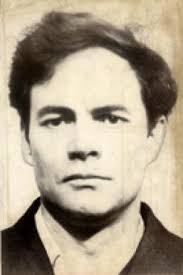

TrueCrime Tales
Gripping real-life stories of murder, mystery and justice. Step into the darker side of life with detailed, compelling narratives you won’t be able to put down.


DONALD NEILSON
Donald Neilson, known chillingly as "The Black Panther," was one of Britain's most notorious and feared criminals of the 1970s. His reign of terror escalated from audacious burglaries to brutal armed robberies and culminated in a high-profile kidnapping that gripped the nation.
Early Life and Origins
Born Donald Nappey on August 1, 1936, in Bradford, West Riding of Yorkshire, Neilson's early life was marked by difficulty. He reportedly had a challenging childhood, losing his mother to breast cancer at the age of ten and suffering bullying at school due to his surname's similarity to the word "nappy." He served in the British Army, being posted in Kenya, Cyprus, and Aden with the King's Own Yorkshire Light Infantry, during which time he honed skills in combat and survival. In April 1955, at eighteen, he married Irene Tate, two years his senior, and they had one daughter, Kathryn, born in 1960. Later, embarrassed by his birth name, he legally changed it to Neilson, reputedly after seeing the name on an ice cream van. He established a garden shed business at his Bradford home, a facade for his burgeoning criminal activities.
Escalation of Crime: From Burglary to Murder
Neilson's criminal career began with an extensive series of house burglaries, estimated to be over 400, which went undetected for a considerable period. During this time, he was known to authorities by various nicknames such as "The Phantom" and "Handy Andy," as he frequently changed his modus operandi to evade detection.
His crimes escalated significantly after November 1970 when he began stealing firearms and ammunition from houses. This marked a shift towards more dangerous armed robberies, particularly targeting small sub-post offices. Between 1971 and 1974, Neilson committed eighteen such robberies. The violence he employed increased as he encountered resistance from postmasters and their families attempting to defend their property.
His spree of violence turned deadly in 1974. On February 15, 1974, Neilson committed his first murder during a robbery at New Park Telegraph Sub Office in Harrogate, North Yorkshire, where the sub-postmaster, Donald Skepper, was shot and killed. Seven months later, on September 6, 1974, he struck again, killing sub-postmaster Derek Astin during a robbery at High Baxendale Telegraph Sub Office in Accrington, Lancashire. It was after this murder that a reporter, Gordon Hughes of the Daily Mirror, used the phrase "Where is this Black Panther?" in a news report, referring to Neilson's stealthy movements and all-black attire, and the nickname "The Black Panther" stuck. On November 11, 1974, Neilson murdered Sidney James Grayland, the husband of the sub-postmistress, during a robbery at Langley Sub Post Office in the West Midlands, and also shot and grievously injured Mrs. Margaret Grayland during this raid.
The Kidnapping and Murder of Lesley Whittle
Neilson's most infamous and devastating crime was the kidnapping of 17-year-old heiress Lesley Whittle. He had meticulously planned this abduction for nearly three years after reading a 1972 newspaper article about a dispute over her late father George Whittle's £300,000 fortune (equivalent to approximately £2.8 million in 2025). Neilson conducted extensive research, including covertly entering the Whittle family home in Highley, Shropshire, on multiple occasions to familiarise himself with the layout.
On January 14, 1975, Neilson entered the Whittle home, cut the phone wires, and kidnapped Lesley at gunpoint from her bedroom while her mother slept nearby. He left a ransom note demanding £50,000. He transported Lesley approximately 65 miles to a disused drainage shaft at Bathpool Park, Kidsgrove, Staffordshire. Here, he kept her captive 54 feet below ground on a narrow, bare ledge. Lesley was tethered by a wire noose around her neck, with a hood placed over her head, enduring terrifying conditions in the dark, hearing only rats and the sounds of trains above.
A complex and ultimately failed ransom attempt ensued, with police meticulously following Neilson's instructions. During one attempted ransom delivery, Neilson shot security guard Gerald Smith six times. Forensic analysis later linked the .22 LR pistol used in this shooting to the earlier post office murders.
Lesley Whittle's body was discovered on March 7, 1975, 52 days after her abduction. She was found hanging from the wire at the bottom of the shaft. The post-mortem examination concluded that she had died from vagal inhibition (her heart stopping due to shock) and emaciation, having not eaten for at least three days prior to her death. While Neilson's defence later claimed she accidentally fell, the pathologist's findings and the circumstances pointed to her being in a dire state of neglect, possibly dying after Neilson fled during a failed ransom collection.
Capture, Trial, and Imprisonment
The nationwide hunt for the "Black Panther" intensified. On December 11, 1975, in Mansfield, Nottinghamshire, two alert police officers, Tony White and Stuart Mackenzie, spotted Donald Neilson acting suspiciously and carrying a holdall. When they approached him for questioning, Neilson, true to his violent nature, produced a sawn-off shotgun and forced PC White into the back of their panda car. A struggle ensued, and PC White was shot and injured. The dramatic altercation spilled out of the car near a chip shop, where customers, including a karate expert named Keith Wood, bravely intervened to help the officers subdue and arrest Neilson. He was initially mistaken by the crowd for an IRA terrorist due to his notoriety and appearance.
Searches of Neilson's home in Bradford uncovered an "Aladdin's cave" of incriminating evidence, including a double-barrelled shotgun, a rifle, hundreds of rounds of ammunition, two crossbows, and a 6-inch ceramic model of a black panther – which authorities believed symbolized his self-perception of stealth and speed.
Donald Neilson's trial at Oxford Crown Court began on June 14, 1976. On July 1, 1976, he was convicted of the kidnapping and murder of Lesley Whittle, receiving a life sentence. His defence argued that her death was accidental, but the jury found him guilty. Three weeks later, on July 5, 1976, he was convicted of the murders of sub-postmasters Donald Skepper and Derek Astin, and Sidney James Grayland. In total, Donald Neilson received five life sentences. The trial judge recommended that he should receive a whole-life tariff, meaning he should never be released. He was acquitted of the attempted murders of Margaret Grayland and PC Tony White but found guilty of lesser charges related to their injuries and possessing a shotgun with intent to endanger life.
Donald Neilson remained incarcerated for the rest of his life. He died on December 18, 2011, at the Norfolk and Norwich University Hospital, at the age of 75, after being transferred there from Norwich Prison. He had spent nearly half his life in prison, a chilling end to the brutal reign of "The Black Panther."